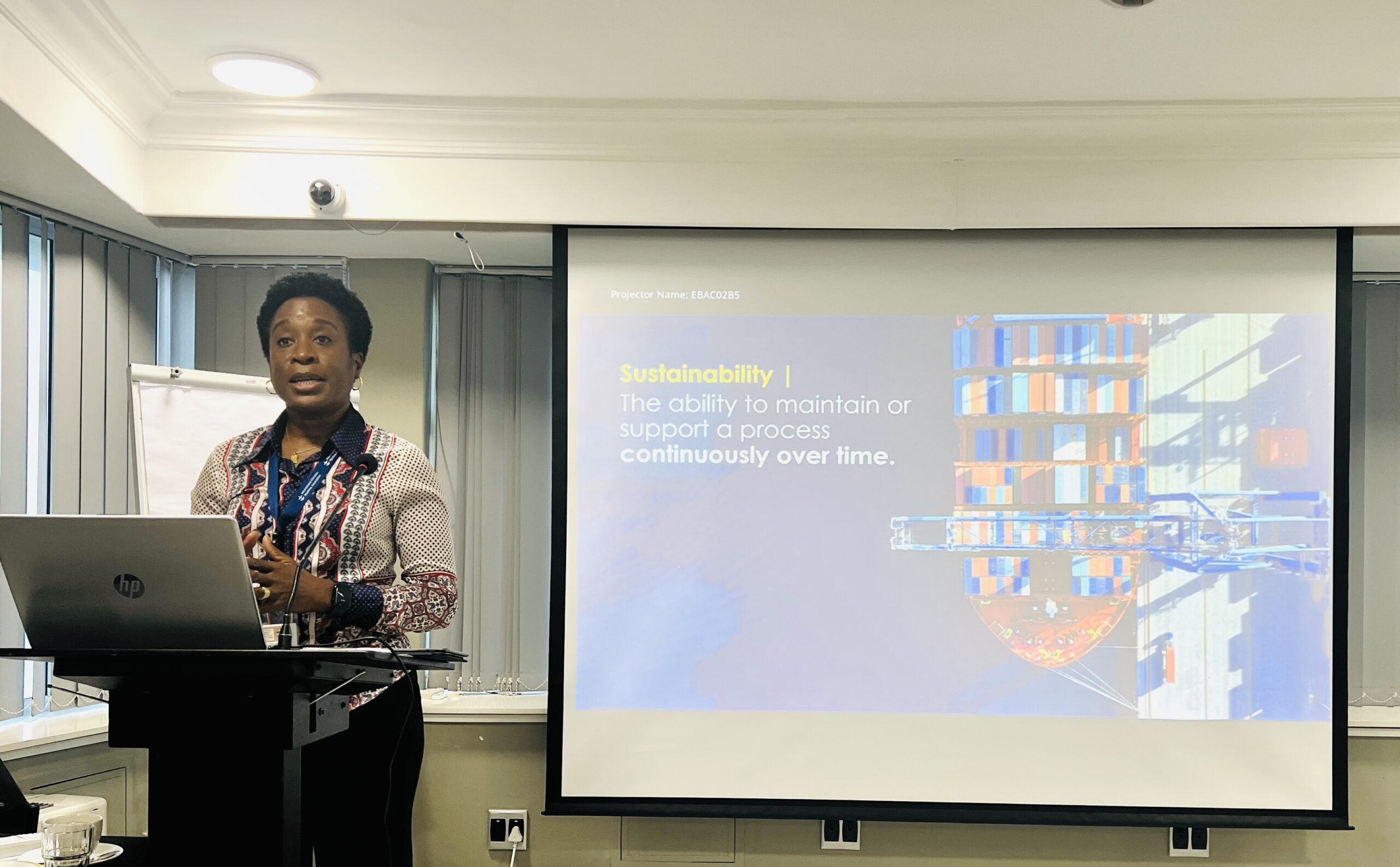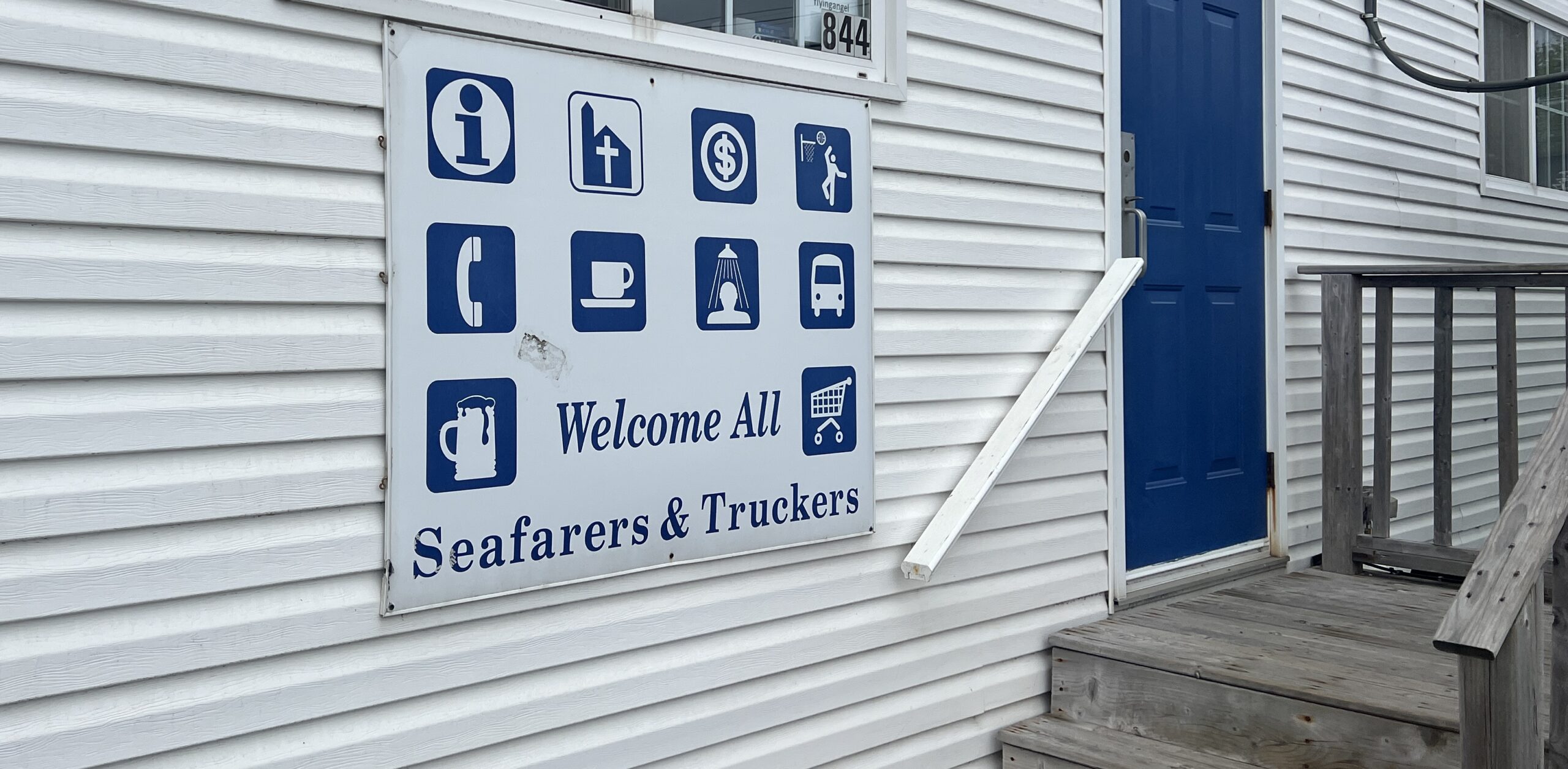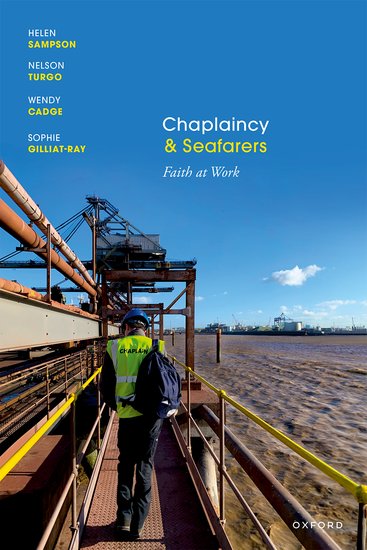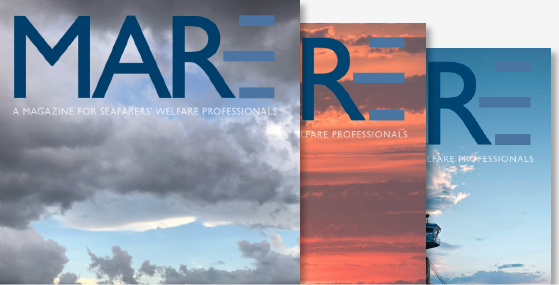Photo caption: Chaplain David Reid accepts a certificate on behalf of SCI Philadelphia during the ISWAN Seafarers’ Welfare Awards ceremony at the ILO in Geneva on April 23, 2018 from ILO Deputy Director Greg Vines for being shortlisted for the award of Seafarers’ Centre of the Year. Photo: © Joy Corthésy for ISWAN
Maritime ministries have a lot to learn from other forms of chaplaincy ministry. A key theme for hospital chaplains today is cultural competency and the ability to engage with patients in the hospital with a broad-spectrum approach. The need to incorporate diversity and inclusion has led major hospitals to create entire departments to devote the resources to ensure that they integrate this into their code of practice. I recently completed a 12-week Clinical Pastoral Education course which, required 300 hours of clinical time at the hospital. That front-line experience brought me into contact as a chaplain with 531 patient encounters. This was a different environment to my work as a volunteer chaplain with the seafarer mission in the port of Philadelphia. At the hospital I found myself stepping in to see patients receiving palliative care following a diagnosis of terminal cancer. I responded to code blue alerts at emergency and the intensive care unit, aiding family members who were under stress as their loved ones received urgent treatment. However, there were interesting parallels that illustrate the power of chaplaincy.
As a hospital chaplain I had some advance information about each patient that I would visit in the hospital, but until I entered that room, I really had no idea what I would find. I was always amazed by the depth of personality that I had the privilege to encounter. I would typically start by asking the patient to tell me about themselves, and then I would listen and observe the patient. The initial narrative usually provided clues to other avenues of dialogue which allowed me to ask them to tell me more. The process of active listening is one of the greatest tools in the chaplain’s toolbox. In my work as a port chaplain, I employ the same technique. I ask the crewmembers to tell me about themselves and their work environment. I know how important it is for them to engage in conversation and to have someone really listening to them. As a former seafarer myself I remember how isolated life can become onboard a ship when all of your dialogue is work-related. I also know that some members of the crew have little engagement with anyone from ashore. As a chaplain, I make a particular point to engage with everyone and in particular all of the crewmembers who are not visited by shore personnel. I have learned from my work as a chaplain that each of us has a story to tell and some of those stories are truly amazing. As chaplains, we can provide a moment for each story to receive a worthy listen.
Within a hospital census, there is a cross-section of society from all walks of life although the predominant demographic seems to be people over sixty. In American hospitals, some patients have the benefit of excellent healthcare plans, and others have limited insurance coverage. I have witnessed the stress that the disadvantaged have when they decline tests because they know that they cannot pay. The hospital does what it can to stabilize the patient so that he or she can be discharged to go home or to another care facility. An unknown factor in the ability of patients to heal is the hidden stress that they must burden from the financial worry of paying for their medical care. Observing the reality of healthcare in the USA reminds me how vital MLC 2006 and other previous maritime regulation is concerning the provision of free healthcare for all seafarers. Being a seafarer requires a life spent working away from the close support of familiar hospitals and doctors. Seafarers must rely on the medical care that is made available to them at the port in which they find themselves. I used to tell my own story of experiences of dental care while serving in the British Merchant Navy, my best trip ashore to the dentist was at the US Airforce base at Cam Ranh Bay in Vietnam during the war. I am sure that many seafarers experience the culture of the countries that they visit as a result of a shore medical or dental visit. Once at sea, medical treatment relies upon the skills of the navigating officers who are trained in first aid. As a Chief Officer on a bulk carrier, I had to suture a wound on the thigh of one of my crewmen while we were mid-Atlantic. There was no anesthetic but the stitches were urgently needed, and that was part of my training just as it is today. Seafarers need to be in good health so they can fulfill their daily duties, onboard a ship there is no ability to call in sick or take a PTO day. This ethic is deeply embedded in the workplace of the seafarer today. I know from my own time at sea that in all my years serving as a watchkeeping navigator, I never missed a watch. There were indeed times when I was suffering from an ailment, but seafarers somehow rise to the challenge and find the energy to make their watch. At the hospital, I worked alongside nurses and patient care assistants who worked very long shifts, and I saw this same dedication and commitment to be on duty to keep the hospital navigating in the same way that a ship runs 24/7.
At the hospital as a chaplain, I was a member of the inter-disciplinary team that met daily to review patient progress. I witnessed a hospital team that was made up of many different nationalities, and they all had the common denominator in the care of the patient. This reminded me of the cultural diversity that we see today amongst the nationalities of the seafarers that make up the manning of a typical crew list. It is not unusual to find eight different nationals amongst a crew of twenty-one. What makes it possible for a multi-national team to collaborate? In the hospital environment, it is the common practice of medicine and patient care that enables all to participate irrespective of their nationality. After all, in medicine, we are all human beings, and while we may have different origins, we all have the same parts. This is in parallel with the business of seafaring, ships are ships and no matter what flag or ownership may exist all ships have the same basic parts. So, it is that the seafarers also are joined in the practice of seamanship, and this has no national boundaries. Thus, seafarers share a common platform, and this explains why they can come together as a team to operate in a collaborative endeavor.
In a hospital environment, some specialists take care of specific functions but there is an overwhelming duty of care to the patient, and this means that no matter what is going on when there is an emergency everyone responds. Onboard a ship there is a similar duty that brings seafarers together because they all must have each other’s back. Onboard a merchant ship there is no fire department, no paramedic, no police. The Master, officers, and crew are all dependent on each other. At sea, while one watch is sleeping another watch is on duty, and that codependency creates a special trust that is the unique essence of what makes a seafarer. This unique essence is evidenced by the exceptional quality that is found in nurses who deliver compassion as they engage in the care of their patient.
This year, I have been involved with the creation of a new volunteer training program for ship visitors at the Seamen’s Church Institute in Philadelphia. During the classroom briefing portion of the training, I shared my personal story of meeting a port chaplain at the age of nineteen. I was serving on a British product tanker, and the work routine was very hard. We were working six hours on and six hours off, seven days a week. Eighty-four hour weeks are not unusual in the shipping industry, even today. We were docked in the port of Liverpool, and I was tired and stressed. I had just come off duty, and there was a knock on my cabin door. A friendly face appeared it was the port chaplain. This was my first encounter with a ship visitor from a seafarer mission. We only spoke for a few minutes but it caused a shift in my depressed mood, and I felt much better after meeting him. That taught me the power of engagement even if it is for a brief encounter. Today, when I visit ships and meet seafarers, I am always mindful of my own experience and aspire to be like the chaplain that visited me many years ago.
In my work as a chaplain, I see the smiles on the faces of the seafarers that we serve; each smile tells me that my volunteer work and the training of others can ensure that the smiles will continue. My message to the new volunteer ship visitors is that we work for smiles.
Volunteerism activity is tracked by the US Bureau of Labor Statistics,[1] and the data published for 2015 showed that 62.6 million people volunteered through or for an organization in a 12-month period. The Bureau of Labor Statistics defines volunteers as: “Persons who did unpaid work.” Notably, the volunteer rate for women is almost 30% higher than for men. A good example of how volunteers are systemically structured is the 1982 Medicare law that requires all hospice’s to demonstrate volunteer hours to be at least five percent of all patient care hours. Legislators inserted this provision as a condition of Medicare reimbursement requiring that: “Volunteers must provide day-to-day administrative and/or direct patient-care services in an amount that, at a minimum, equals 5 percent of the total patient care hours of all paid hospice employees and contract staff. The hospice must maintain records on the use of volunteers for patient care and administrative services, including the type of services and time worked.”[2]
Seafarer missions around the world face challenges to fund their operations and to recruit and retain capable staff. Volunteers are an essential component of every seafarer mission because they enable expenses to be efficiently directed while tapping into the energy created by the passion of volunteers. At my hospital, the spiritual care team consisted of eight staff chaplains supported by 80 volunteer chaplains. Many hospitals and hospices are backed by a volunteer corps. However, volunteer programs need to be appropriately resourced and supported. This is evident in the commitment that hospitals and hospices provide to maintain their volunteer team. Successful volunteer programs have a consistent cardinal rule; Volunteers must be loved and respected by their organization. This is the way that volunteers are recognized and rewarded. Volunteers will drift away if this cardinal rule is not appreciated. This applies to seafarer missions and any volunteer activity. Love your volunteers, and they will bring smiles to the faces of the seafarers that you serve.
Author: Rev. David Reid MA AFNI
[1] “Volunteering in the United States”, bls.gov, accessed March 2, 2018, https://www.bls.gov/news.release/volun.nr0.htm
[2] “Conditions of Participation”, vitas.com, accessed March 2, 2018, https://www.law.cornell.edu/cfr/text/42/418.78





